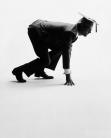Adjective Pronouns
Adjective Pronouns :
Some words are used either as adjectives or as pronouns. Such words are called adjective pronouns.
Adjective pronouns are classified according to their meaning as (1) demonstrative pronouns and (2) indefinite pronouns.
The demonstratives are this (plural, these), that (plural, those). They point out persons or things for special attention.
The demonstratives may be used either as adjectives or as pronouns.
As adjectives….
1. This sailor saved my life.
2. These girls are energetic.
3. Be kind to this child.
4. I am not alarmed by these threats.
5. Give this boy a dime.
6. These cherries are sour.
7. This fire is too hot.
8. Look at these acorns.
9. That saw is dull.
10. Those trees are dying.
11. We must cross that stream.
12. Take those dishes away.
13. That train is late.
14. Who are those strangers?
15. Send that dog home.
16. Do you see those rocks?
17. I am tired of that tune.
18. I am sorry for those children.
As pronouns….
1. This is a fine morning.
2. These are cowboys.
3. This is my uncle.
4. Robert gave me these.
5. Can you do this?
6. I never saw these before.
7. This is the road.
8. Who are these?
9. Look at this.
10. These are our rackets.
11. That is Ellen in the canoe.
12. Those are deer.
13. That would please him.
14. Those are nasturtiums.
15. That must be he.
16. What are those?
17. What is that?
18. Those are kangaroos.
If the demonstrative is followed by a noun which it limits (as in “this sailor”), it is an adjective. If the demonstrative points out something which it does not name (as in “This is a fine morning”), it takes the place of a noun and is therefore a pronoun. The simple subject of the sentence “This camera is expensive” is the noun camera, which is modified by the adjective this. The subject of the sentence “This is expensive” is the pronoun this.
Note : Yon, yond and yonder are common as demonstratives in older English and in poetry. Thus….
1. Nerissa, cheer yon stranger (Merchant of Venice)
2. Question yond man (As You Like It)
3. Is not yond Diomed? (Troilus and Cressida)
4. Call yonder fellow hither (Henry V)
5. Is yonder the man?” (As You Like It)
Demonstratives have only the inflection of number. They have the same form for all three genders. The nominative and objective cases are alike. The possessive is replaced by OF with the objective.
Singular
1. Nominative and Object - this
2. Possessive - [of this]
3. Nominative and Object - that
4. Possessive - [of that] Plural
1. Nominative and Object - these
2. Possessive - [of these]
3. Nominative and Object - those
4. Possessive - [of those]
Yon, yond, and yonder are not inflected.
A demonstrative pronoun may be used to avoid the repetition of a noun.
1. My dog and that [= the dog] of my friend John have been fighting.
2. Compare these maps with those [= the maps] on the blackboard.
The singular forms this and that (not the plurals these and those) are used with the nouns kind and sort.
1. I like this kind of grapes.
2. I have met this sort of people before.
3. That kind of apples grows in Idaho.
Adjective Pronouns :
Adjective Pronouns To HOME PAGE

Related Links : Adjective Pronouns